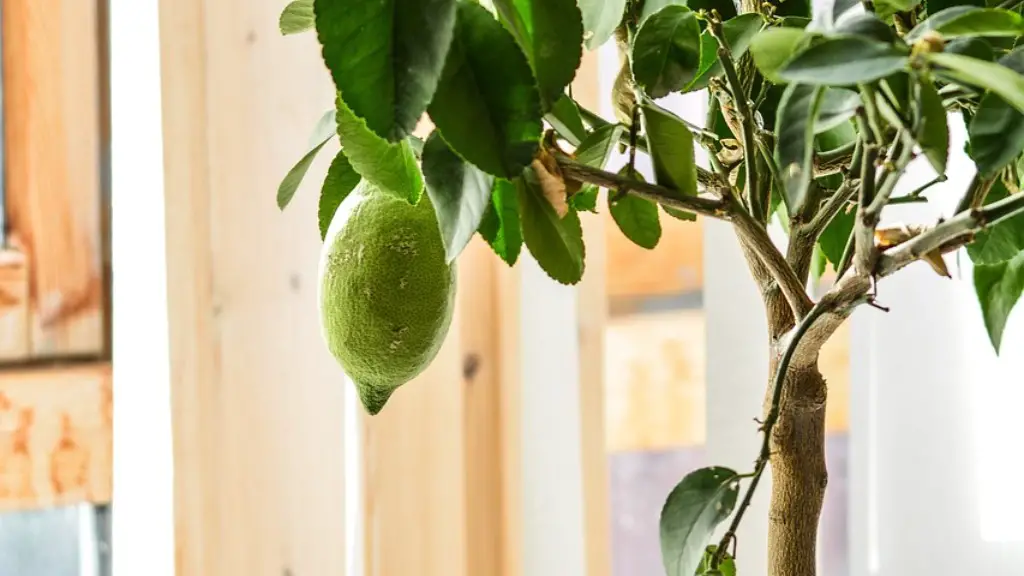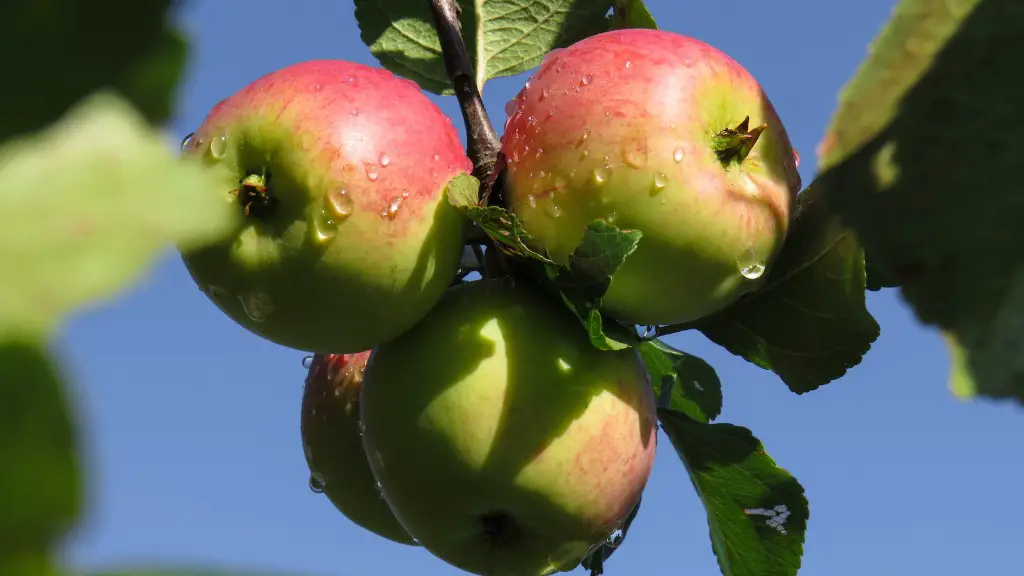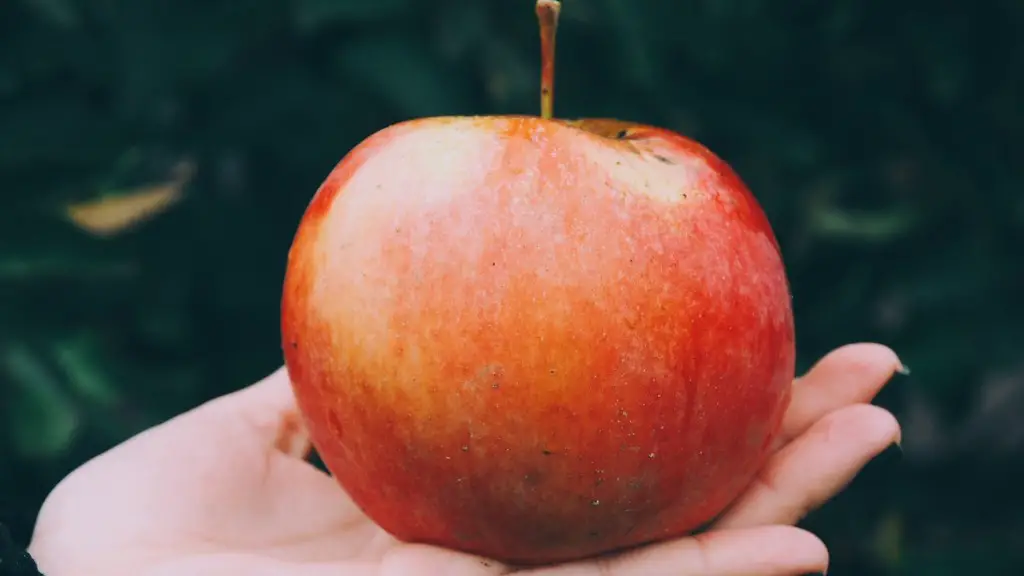Overview of an Avocado Tree
An avocado tree is a tropical evergreen tree, typically growing to 30-40 feet in height. It produces an edible fruit most often seen in guacamole. The tree is native to Central and South America and grows in frost-free climates where temperatures rarely dip below freezing. An avocado tree can live for hundreds of years and requires minimal care, as long as it’s planted in the right location with suitable soil and watering requirements. To produce fruit, the tree requires cross-pollination from another avocado tree.
Appearance of an Avocado Tree
The avocado tree has a round canopy with long and glossy, dark green leaves. Its trunk is thick and sometimes has peeling bark. It has a large, central taproot leading into smaller fibrous roots that spread wide around it. Its edible fruit is oval-shaped, with bumpy skin, and are green, yellow, or purple depending on the variety of tree.
Soil Requirements for an Avocado Tree
It is suggested to plant an avocado tree in soil with a pH of 6-7; anything higher or lower can stunt its growth. The soil should also be well-draining, as avocado trees are not very tolerant of wet feet. A raised bed or mound soil can also be used, ensuring excess water will drain away from the root zone without becoming stagnant. Adding organic matter like compost is beneficial to give the tree the nutrients it needs. If a sandy soil is used, it may need to be amended with additional organic matter such as compost, peat moss, or manure.
Care Requirements for an Avocado Tree
When planting a young tree, it should be placed between 12-20 feet away from other objects like fencing, buildings, and other trees. Once planted, the tree should be watered thoroughly and deeply every few days. As it matures, the tree may require water weekly or every few weeks depending on the time of year and its location. Every once in a while, the tree should be fertilized with a slow-release fertilizer or mulched with compost or aged manure. Pruning the tree can also help to produce a strong, healthy, and symmetrical tree.
Climate Requirements for an Avocado Tree
An avocado tree requires a climate that is warm and humid with temperatures ranging from 45-75℉ year-round. It also requires sunny, bright conditions and protection from strong winds, cold air, and frost. The tree should be planted in a location that receives partial sun, staying away from the hottest parts of the day. Additionally, in some regions, it is beneficial to provide the tree with a wind break to help it grow more successfully.
Harvesting an Avocado Tree
When the tree is ready to harvest, the fruits will become a dark purplish-green color. Fruits are typically ready to harvest in late summer and fall, and can be stored in a dry, cool place. Fruits will ripen over a few days, so it’s important to check frequently and pick before they are overripe and start to rot. Each tree produces up to 500 fruits annually.
Diseases Affecting Avocado Trees
Common diseases that may affect an avocado tree include root rot, anthracnose, powdery mildew, and scale insects. To prevent or treat these diseases, it is important to allow for adequate airflow within the tree, provide good drainage in the soil, and inspect regularly for signs of pests or diseases. Additionally, if pruning is required, it should be done in the winter months to reduce the stress on the tree.
Facts About the Avocado Tree
An avocado tree is a slow-growing tree and can take up to 15 years to reach its full harvest potential. They are a long-living species and can live between 80-250 years. If a single avocado tree is adequately cared for, it will remain productive for its entire life. The tree’s energy goes into producing its fruits, making good pruning practices essential for an abundant harvest.
Mapping the Avocado Tree’s Genome
In recent years, scientists have been mapping the avocado tree’s genome in order to find new traits and uses for the species. It is the first tree to be sequenced that is part of the Lauraceae family, which includes other fruits like camphor laurel and star anise. Scientists have also been researching the tree’s metabolic pathways, hormones, and photosynthetic systems, gaining new insight into the species.
Avocado Tree as an Invasive Species
The avocado tree is a non-native species to certain regions, often transplanted by humans and becoming an invasive species. In some countries, like the Philippines and Colombia, it has caused extensive damage to the rainforests, competing with native plants and reducing biodiversity. In other regions, like Southwest Florida, it typically remains within the boundaries of its cultivated environs.
Cultivating Avocado Trees in Urban Areas
Avocado trees can be grown in urban areas with access to large pieces of land. The tree should be planted and nurtured in a way that takes advantage of the tree’s natural characteristics, allowing it to thrive in the city environment. The tree should also be placed in a spot with full sun and pruned strategically to manage the size of the tree and number of fruits produced.
The Economic Impact of the Avocado Tree
The commercial production of avocados has had a large economic impact in certain regions. Avocado trees can be grown in a variety of climates and are easily cultivated, making them an ideal crop to produce. The burgeoning demand for avocados has led to an increase in cultivation, especially in regions with ideal climates and soil.
The Environmental Impact of the Avocado Tree
As the avocado tree has become a popular crop, it has caused some environmental issues. Avocado production requires copious amounts of water and fertilizer, resulting in water pollution and soil degradation. Additionally, in some areas the tree has been classified as an invasive species, taking away from the local biodiversity and causing damage to ecosystems.
The Benefits of Growing an Avocado Tree
Despite the potential environmental and economic issues, the avocado tree has many benefits when grown and cultivated responsibly. In addition to providing a delicious and healthy fruit, the avocado tree also provides shade and shelter, enabling other plants to grow around it. It also helps to protect the soil and can be a great source of income for many individuals and communities.


